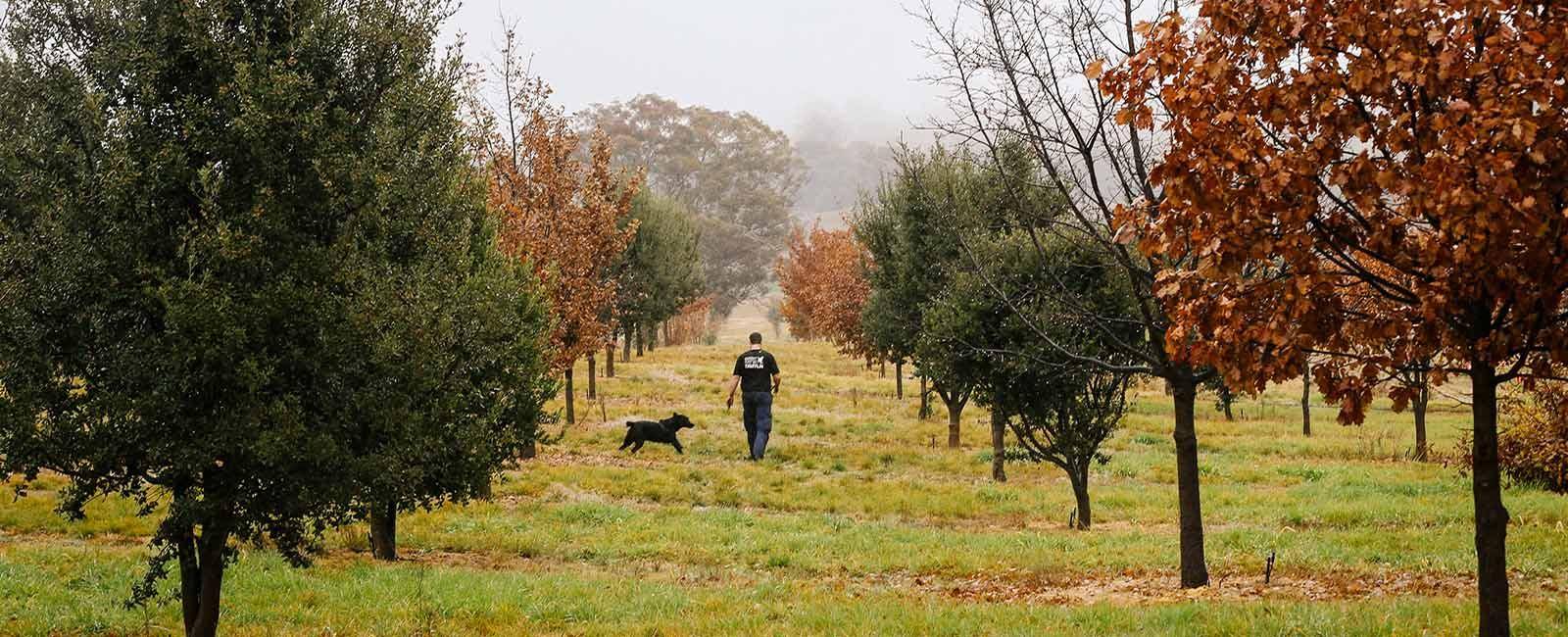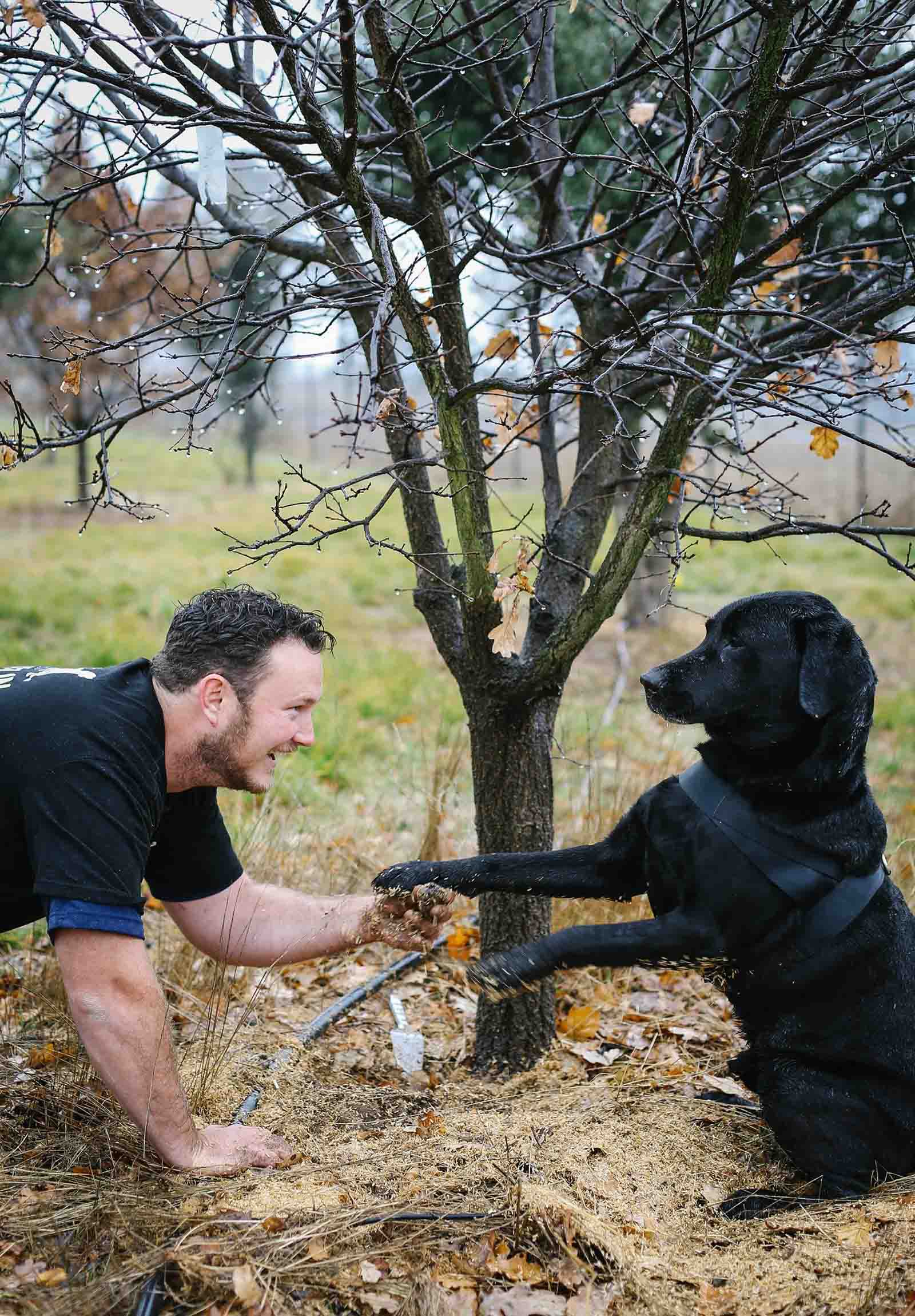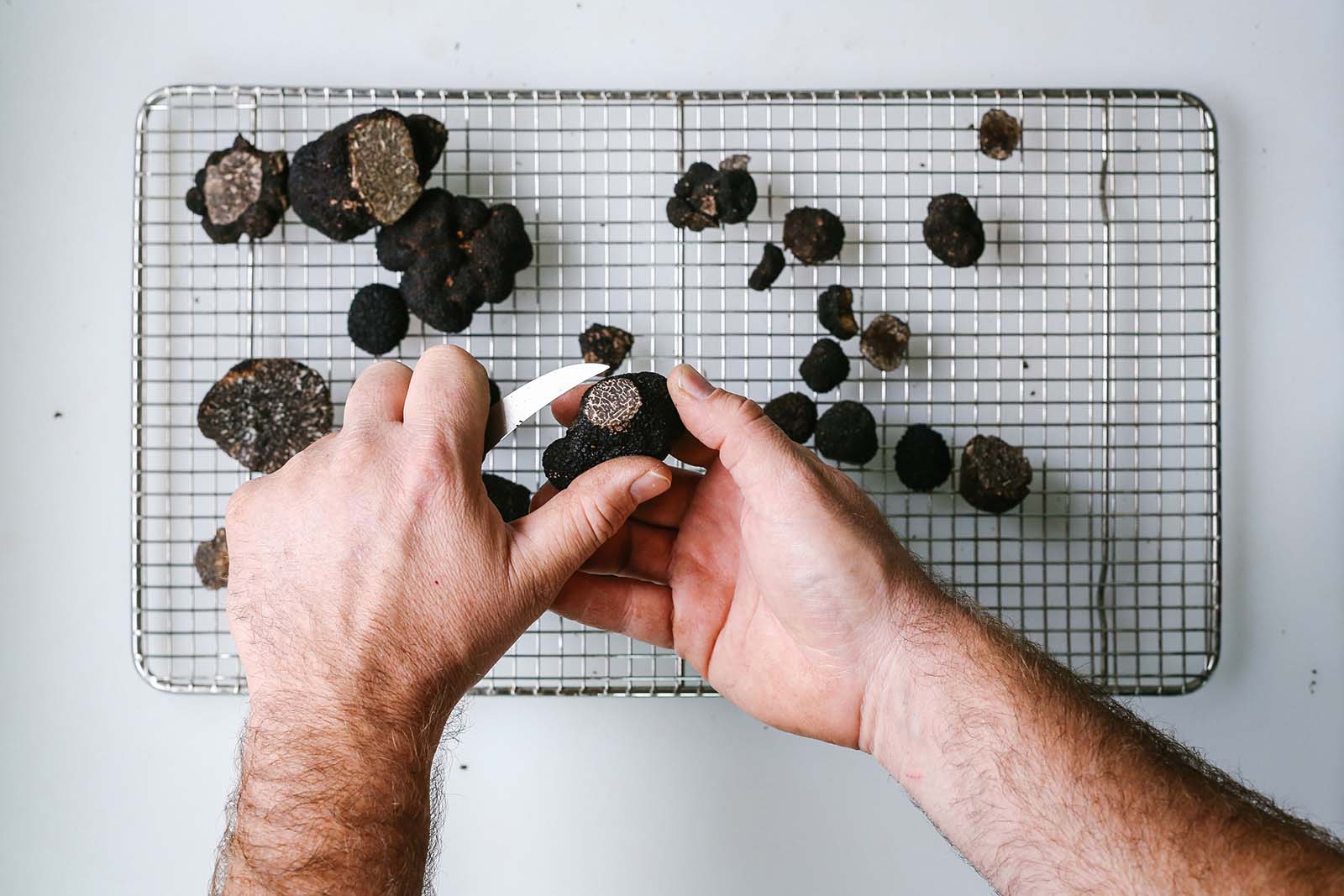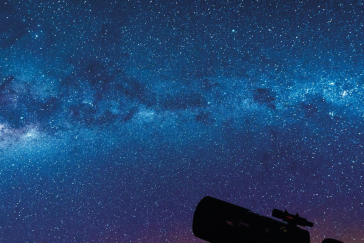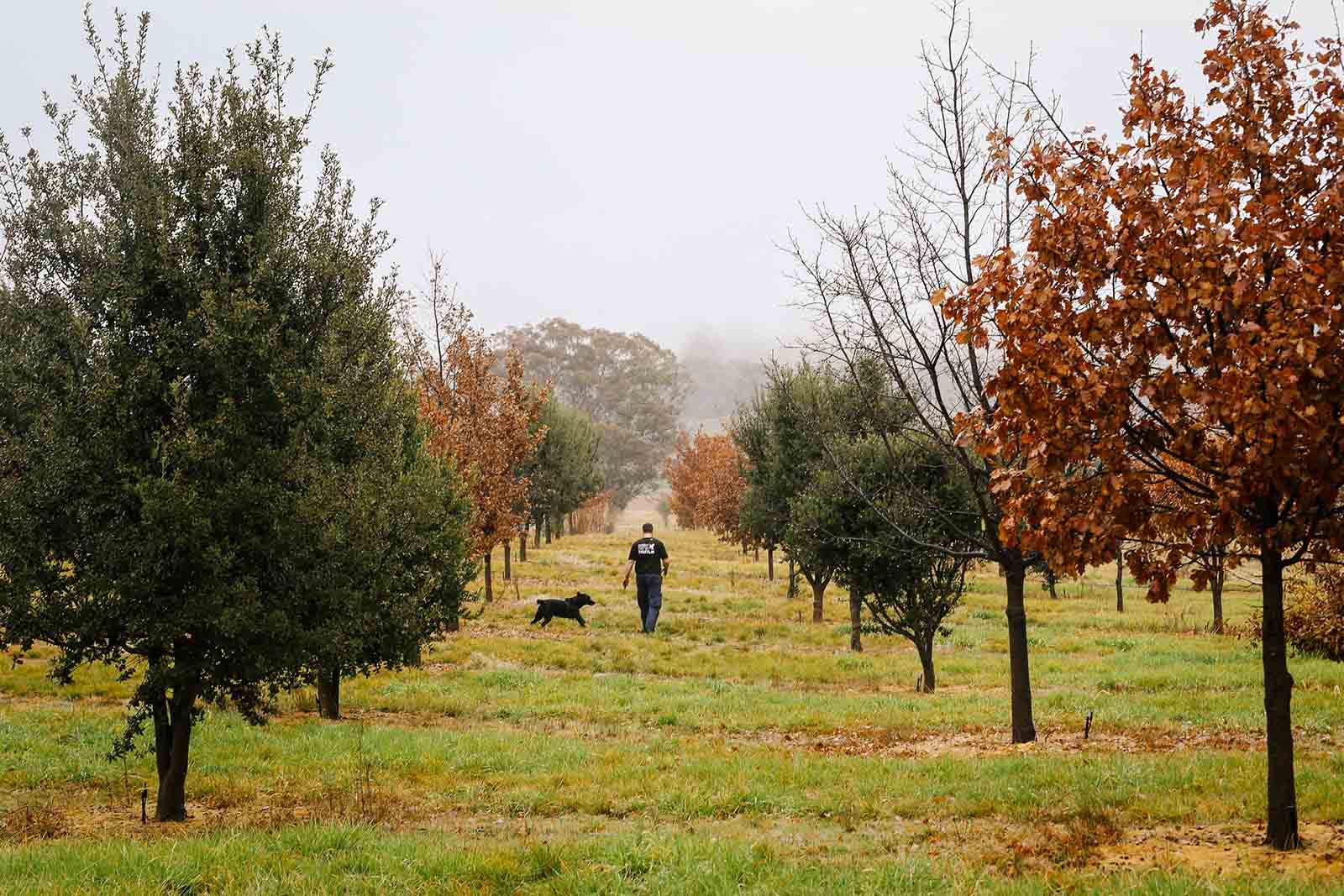
There was a time when the only people mad enough to visit Canberra in winter were politicians, children on school excursions and skiers on their way to the snow. But a weird-looking fungus highly prized by chefs and food lovers is changing that.
The prize hunt
Canberra is rapidly becoming the place to go for truffles, not the chocolate variety but the nobbly sort that grows underground near the roots of trees (mostly oaks and hazelnuts) that have been inoculated with the necessary spores. Dogs are trained to sniff out these treasures and, whether it’s because of their elusiveness or their aroma and flavour, the truffles they find can fetch as much as a few thousand dollars a kilo.
Since the first truffle farms, called ‘trufferies’, were established in and around the National Capital a little over a decade ago, truffles have been found to thrive in the region, where the frosty mornings, sunny days and dry climate provide perfect growing conditions.
Australia now has more than 150 trufferies, with plantings in every state, but the harvest in Canberra can extend for up to 14 weeks, twice as long as in most regions. The truffles are harvested from June to August – the best time to join in the hunt and experience the excitement of the chase, but you’ll have to rug up very well indeed.
Jayson Mesman owns The Truffle Farm, the only trufferie in a capital city, just 10km from Canberra Airport. He hosts truffle hunts during the season from June to September.
Truffle hunting has gone to the dogs
In France, where truffles are part of the lexicon of fine cuisine, pigs were traditionally used to sniff out the truffles but while Mesman keeps pigs on his farm – weighing in at a hulking 120kg each – they can be too boisterous and too fond of eating the truffles to be trusted on a hunt these days. Instead, dogs are more commonly used to detect the truffle scent (Mesman has a team of six), guiding the handler to the spot under the tree where a little bit of gentle digging reveals the pot of gold a few inches below.
The Truffle Farm has more than 4000 trees, including French and English oak as well as hazelnut trees, over 10 hectares or almost a quarter of the 41 hectare farm.
The local climate almost replicates the conditions in Perigord, France, but it takes much more than that to successfully grow the highly prized Black Winter Truffle or Perigord Truffle found at Canberra’s trufferies and not all truffles taste the same. At the Truffle Farm a massive investment has been made in creating the right balance in the soil to produce truffles with a rich and intense flavour which is in great demand from buyers in Australia and in Japan, Mesman’s key export market.
“There is also a taste distinction between the trees, with hazelnuts producing truffles, on our farm at least, that have undertones of chocolate which we tend to favour in our dessert dishes,” says Mesman.
And that’s another part of the truffle treat – the chance to taste the spoils of the hunt. After each hunt, there’s a demonstration of how truffles are prepared and a tasting session. During the season the Truffle Farm will team up with Damian Brabender, owner and executive chef at Otis Dining Hall for brunch and degustation events.
Less than an hour from Canberra and just across the border in New South Wales Matt Sturgiss, of Tarago Truffles, says they generally find between one and seven truffles under a tree each season, ranging from a few hundred grams in size to half a kilo or so. Matt’s parents, Anne and Denzil, planted the first of their 4300 oak trees in 2002 and host truffle hunts every Saturday during the season from late June to the end of August.
Braving the weather for the perfect find
It can be tough getting out of bed on a winter’s morning in Canberra, and to say that the air was bracing when I set off for Tarago along the Bungendore Road is an understatement. However, as I joined 20 other eager folk on a hunt, excitement quickly took hold. There’s not just the element of surprise – will we or won’t we find any? There’s also the knowledge that if you do, they are worth a fortune. They’re not mine to keep but I do get to taste them, and that’s excitement enough for anyone who loves food.
Denzil and Matt and their two faithful dogs led us systematically along the rows of trees with one making a sudden dash across three rows for a small truffle that Denzil nearly missed.
The dogs are trained using rewards and, so long as they have a good nose, almost any breed can be trained. Dusty was rescued from a pound and will be hunting for her fifth season this year but her talent was evident on her first hunt.
The cold weather can be a challenge for guests on the hunt and a strong wind can make it hard for the dogs too as it blows the scent away, but the walk in the brisk country air sharpens the appetite and when we return to shelter Anne serves hearty pumpkin and cauliflower soups with truffle shaved on top, while Matt washes the truffles we had found. It was the first chance for most of the ‘hunters’ to taste these little beauties and everyone was surprised by their intense flavor – vaguely mushroom- and beetroot-like, they are earthy, musty and sweet – what a wine taster might describe as “forest floor”. Somehow, they magically transform a dish, intensifying the flavour of almost anything they are paired with.
WHERE TO JOIN THE TRUFFLE HUNT
- The Truffle Farm, Mt Majura Road, Canberra, ACT
- Tarago Truffles, 173 Willandra Lane, Tarago, NSW
- Visit during the Truffle Festival and find more things to do in Canberra
GETTING THERE
CREDITS
Due to the ongoing impact of Covid-19 some experiences in this blog post such as truffle hunts may be delayed until further notice.

